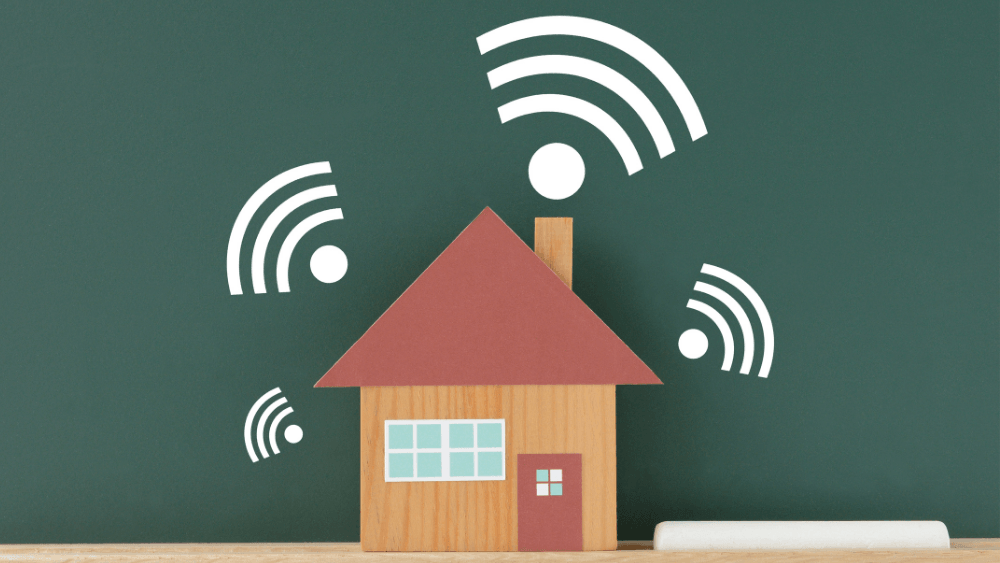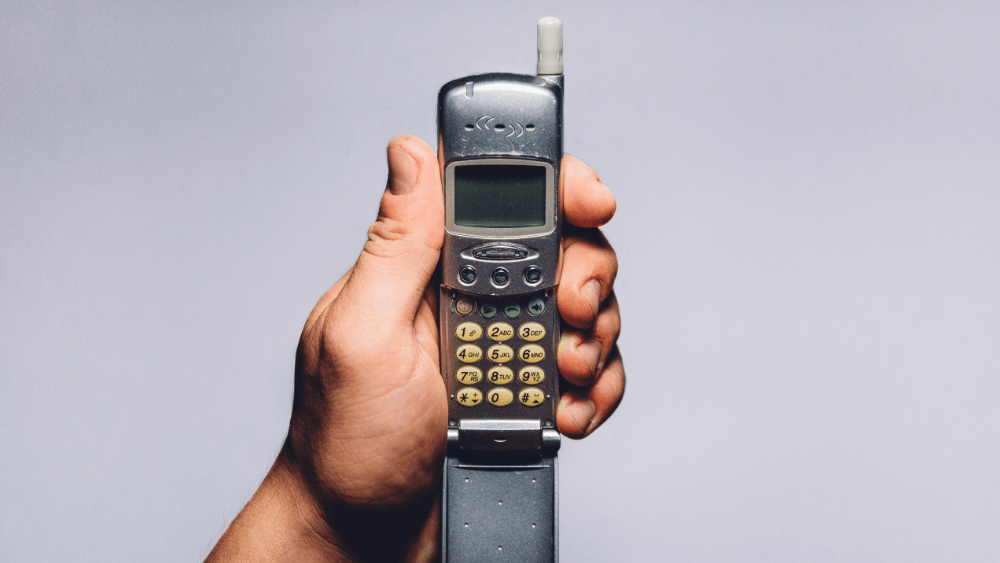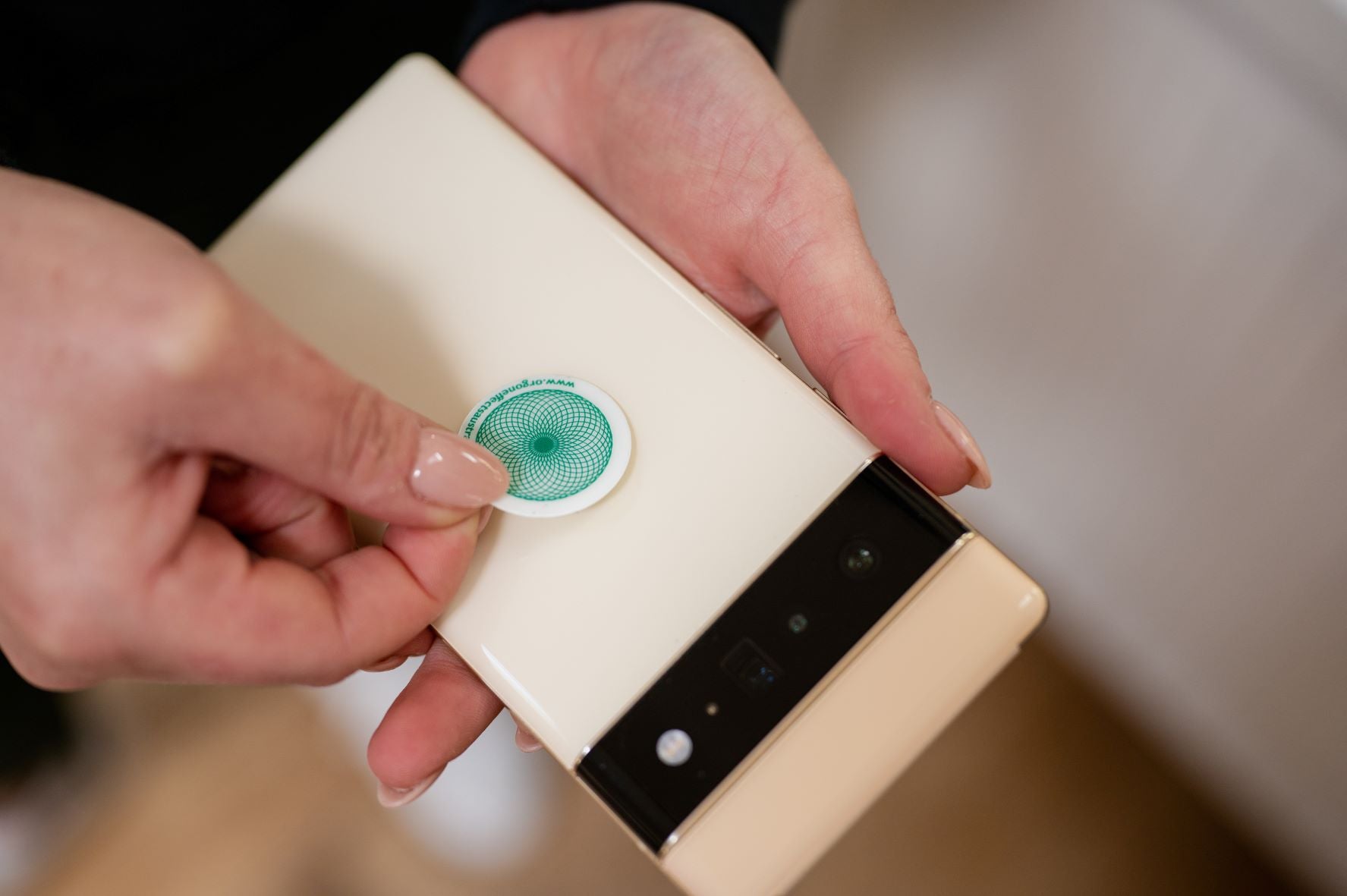If you have landed here, you probably know the dangers of electromagnetic radiation. It is obvious that you also worry about how much radiation your home Wi-Fi router is emitting and you want to do something about it. Fortunately, there are a few options we're going to talk about, especially a low EMF router, which inherently gives off much less radiation while also delivering a high-quality wireless connection for your home. Finding a low EMF router is almost impossible, but in this article, we're going to talk about a good option.
If you already have a Wi-Fi router installed in your house, you can purchase a Faraday Cage for WiFi to protect you and your family from the harmful radiation emitted by your router.

The Faraday cage’s metal mesh scatters the radiation photons as they pass through, thereby weakening their power.
Faraday cage blocks 90 to 95 percent of EMF radiation and has an attenuation of up to 10 to 15 decibels (dB).
Does a Router Give Off EMF?
Devices that push Wi-Fi power, such as routers, some modems, and even our cell phones via hotspot functions, give off what is sometimes referred to as radiofrequency (RF) radiation, or often microwave radiation. Modems, routers, and other devices that push Wi-Fi do this all the time to maintain connections.
Radiofrequency radiation, which includes both microwaves and radio waves, is a low energy wave and at the end of the electromagnetic spectrum.
This makes microwave and RF radiation a form of "non-ionizing radiation," which simply means that there’s enough energy to move atoms in a molecule and cause friction, but the energy is not enough to remove a charged particle.
When microwave or RF radiation is absorbed in large quantities, it can generate heat. This is how microwave ovens heat food by loading our water or food with RF radiation, which results in a great deal of friction that generates heat. It’s now a well-studied and recognized fact that prolonged and excessive exposure to this type of radiation will have negative effects on human health and biology. Although microwave ovens are intended for heating food, they create the same type of radiation that wireless routers produce when they transmit data through the use of radio waves.
Is Wi-Fi Radiation Harmful?
Long-term exposure to microwave radiation or radiofrequency waves has long been studied and has been shown to have all possible negative effects on health.

Even the American Cancer Society, which largely refuses to suggest that electromagnetic radiation causes long-term damage, admits on its website that there is concern that some forms of non-ionizing radiation can have biological effects that can lead to cancer.
Independent studies have linked electromagnetic radiation from Wi-Fi to a variety of health problems, including:
- Disturbance of the cerebral glucose metabolism
- Disruption of cell metabolism
- Higher permeability of the blood-brain barrier
- Breaks in DNA strands
Frequent and prolonged exposure to Wi-Fi also often causes symptoms such as:

Fatigue - The most noticeable is fatigue that occurs even after what appears to be a full night's sleep or rest, or fatigue that lasts all day.
Sleep Problems - This is very common as people's bedrooms have become a hotbed of electromagnetic radiation. From cell phones by the bed to innerspring mattresses that act as antennas to Wi-Fi routers in our homes – electromagnetic radiation during sleep is very common.
Tinnitus - More commonly referred to as simple ringing in the ears, it doesn't always present itself as ringing. Tinnitus is defined as hearing a constant sound when there is no external sound and may actually appear as a hiss, click, roar, or squeak. This is common with severe EHS.
Brain Fog/Cognitive Impairment – It is felt when you feel that your memory has deteriorated or that you have trouble remembering events, places, or names. It is also noticeable when you have difficulty concentrating. Some experts believe that the considerable rise in Alzheimer's disease is due in part to damage from electromagnetic fields and our wireless age.
Skin Reactions - Some people react with skin irritation, such as redness, itching, or even a rash. This is most common on the face and upper arms but can appear almost anywhere on the body.
Heart Palpitations and Chest Pain - Often seen in people with EHS or as a reaction to the electromagnetic fields around them, the sensation is similar to angina when blood flow to the heart is restricted. Less severe, but still symptomatic, it can be a racing or pulsing heartbeat.
Low EMF Router
There is an amazing product, the JRS Eco-Wi-Fi router. These are basically high-quality routers from Asus that have specially programmed firmware developed by JRS installed on the routers aftermarket.

The unique JRS routers can do the following:
- Radiation from the Wi-Fi is reduced by 90 percent when the router is in standby mode
- 95 percent reduction in Wi-Fi transmission power
- 100 percent reduction in Wi-Fi radiation exposure through scheduled Wi-Fi shutdown
All of this happens without really limiting the range or functionality of the Wi-Fi. You can continue to use all your WLAN devices as usual with a strong connection and at the same time, you are exposed to much less electromagnetic radiation.
How Can the JRS Eco-Wi-Fi Router Achieve This?
JRS proprietary software installed on Asus routers modifies how they work. First, the software reduces the pulse rate of the device. Second, the firmware changes the pulse intensity or the transmitting power of the device.
Let’s explain a little more.
Your regular Wi-Fi router pulses at 10 hertz (Hz) or 10 times per second. If you take an EMF meter or an acoustimeter and turn the volume on, you can really hear it. If the JRS Eco-Wi-Fi firmware is installed, the router will send the same signal, but at 1Hz or only once per second. This ultimately leads to a 90 percent reduction in the electromagnetic radiation emitted by the device.

Then, the JRS Eco-Wi-Fi router will be modified so that you can adjust the transmission power as you really need it, instead of always transmitting at full power. For instance, if you reside in a small or mid-sized home, you probably don't need a router that transmits at full power. It would just expose you to much stronger radiation with absolutely no gain as you move the Wi-Fi much further than you actually need. With the JRS Eco-Wi-Fi router, users can test the strength of the connection and adapt the transmission power to the size and structure of their home.
How Do I Block EMF on my Wi-Fi Router?
Being intentional about electromagnetic radiation exposure is something you are in control of. Just like wearing sunscreen with a specific SPF rating to block ultraviolet rays from your skin, there are things you can do to reduce or block your exposure to electromagnetic fields.
- Use an EMF Blocking Router Cage
The Faraday Cage for WiFi allows you to use your existing router while blocking up to 95 percent of EMF transmissions from your router's WiFi signal. The cage is made of aluminum and copper materials. The Faraday cage’s metal mesh scatters the radiation photons as they pass through, thereby weakening their power. It has an attenuation of up to 10 to 15 decibels (dB). This particular model is large enough to fit large Wi-Fi routers from Uverse, Xfinity, ATT, and Comcast.

- Use a wired Ethernet connection
Most EMF consultants will advise you that in addition to not using any electronic devices, the best way to reduce EMF exposure is to connect to an Ethernet cable for your internet use. However, it always comes with a caveat. Studies have been conducted to suggest that strong signals from the router can still travel outside of the Ethernet cable, causing electromagnetic interference (EMI).
Electromagnetic interference, also known as "dirty electricity", is always at the high-frequency level and is often generated by high-speed modems due to inefficient cabling in building construction. If Powerline Communication (PLC) or Power Over Ethernet (PoE) cables have been used, electromagnetic interference can occur even when using a wired Ethernet connection. To overcome this, you can use a dirty electrical filter to shut off the EMI before it reaches your connected wired device.
- Opt for a slower internet connection
The faster the internet speed and the stronger the internet connection, the more exposed you and your loved ones will be to electromagnetic fields. If you can handle it, you should resist the stress of having the fastest and strongest internet connection available.
4. Put your devices in airplane mode
When you put your device in airplane mode, you're essentially turning off Wi-Fi and Bluetooth. This prevents a higher emission of electromagnetic fields.
- Turn off your router's Wi-Fi when it is not in use
This can be a little tricky as most modern TVs use both internet connectivity and Bluetooth connectivity to deliver their full capabilities. If you can at least turn off the Wi-Fi signal while everyone in your household is sleeping, you're sure to sleep better. Even if the router is not in the same room as you, keep in mind that its signal will travel through the floors and walls of the building.
When you log into your internet connection, do you usually see more than one option? Most likely, you will come across broadcasts from your neighbors as well. And they also get from you. As part of the parental controls feature, some newer routers allow you to program them when Wi-Fi is on and off. If your router does not have this option, an easy solution is to include a timer that you can easily plug it into.





